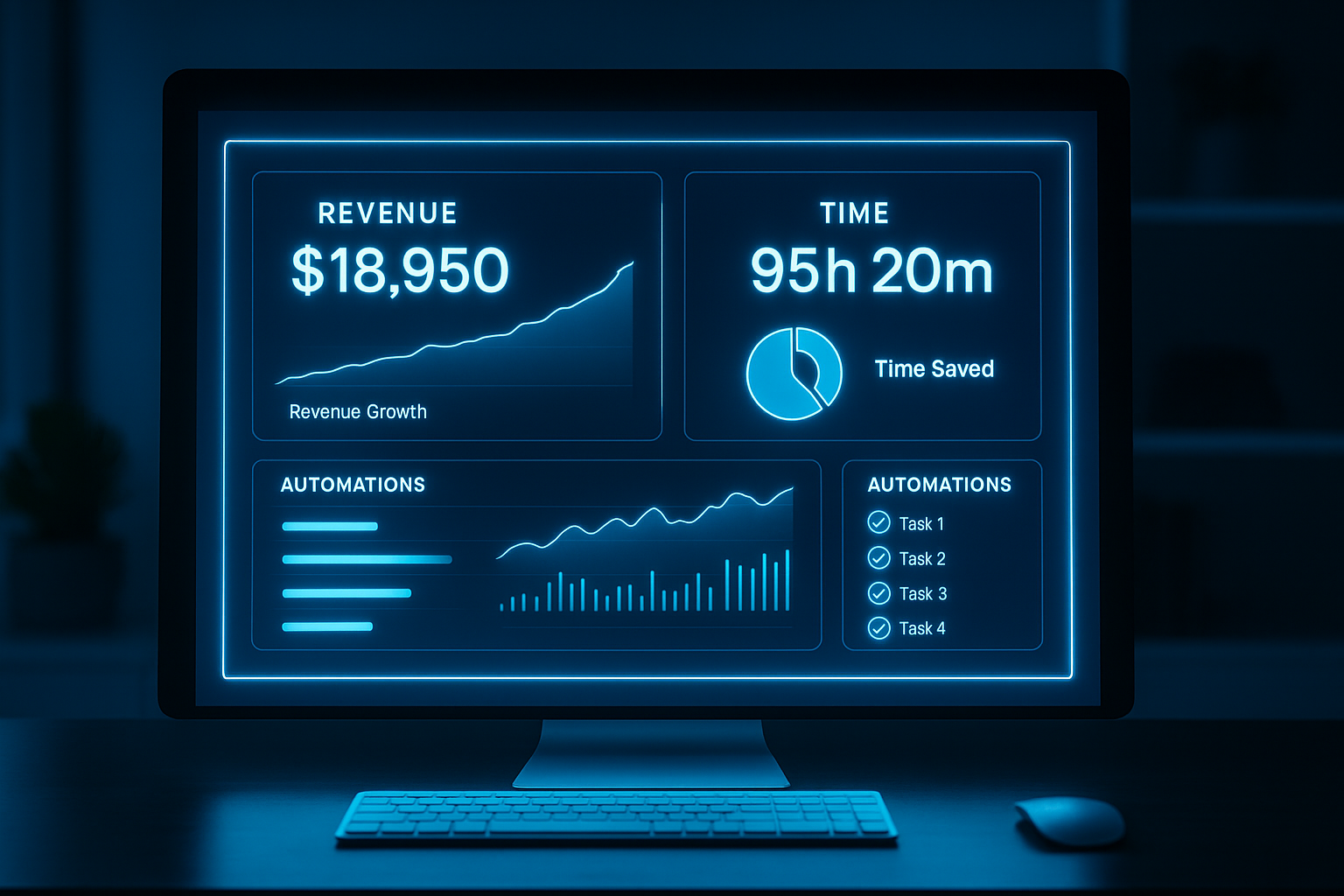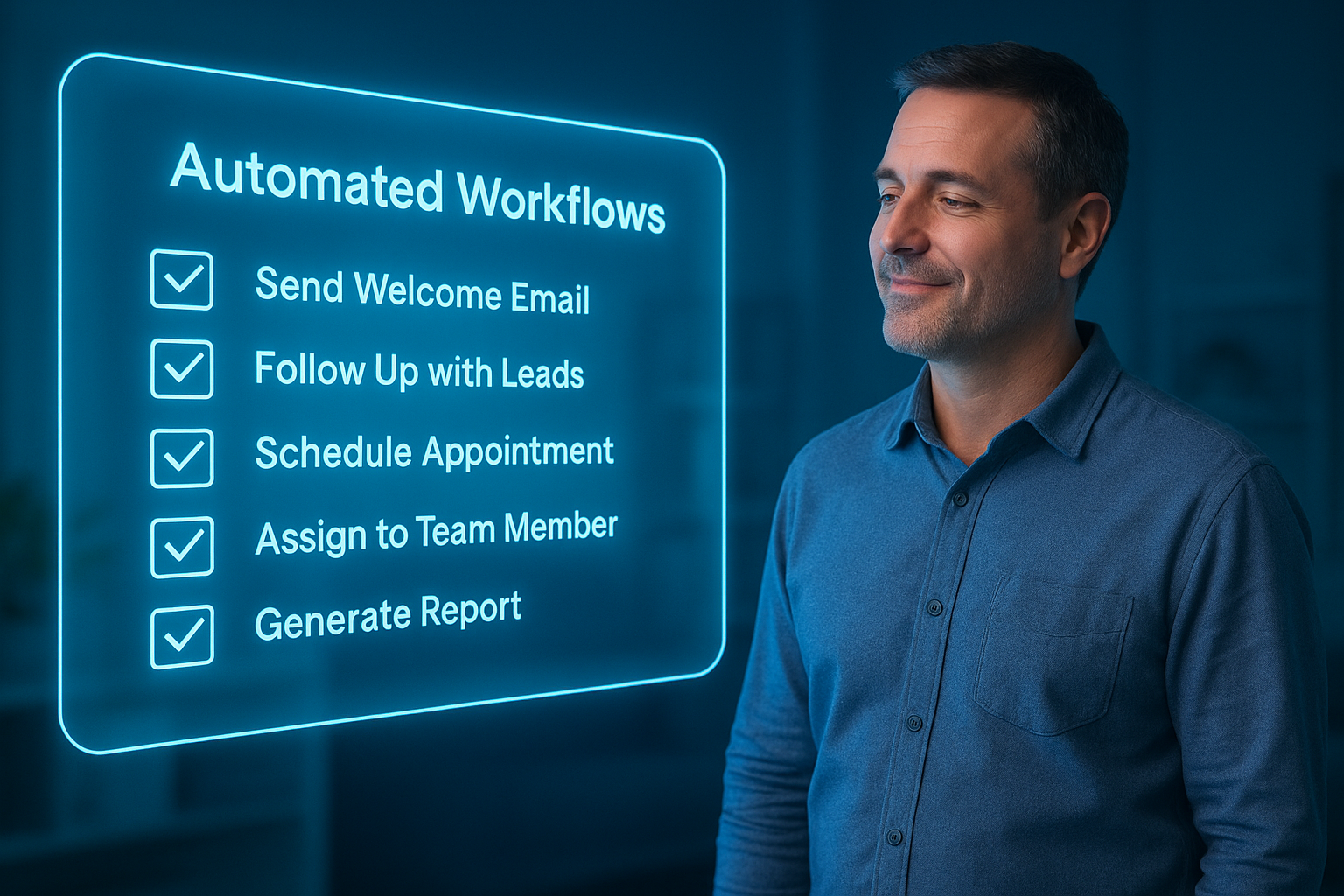Why Working ON Your Business is the Key to Scaling
The Foundational Mindset Shift That Comes Before Growth

Every entrepreneur starts out working in the business. Answering every email. Sending every invoice. Delivering every service. But at some point, the very thing that got you off the ground becomes the bottleneck to your growth. You can only scale when you stop operating like an employee in your own business—and start thinking and acting like its architect.
Working ON your business means stepping back to design the systems, processes, and strategy that allow it to grow without you being involved in every decision and task.
It’s not a luxury. It’s the requirement for building something that lasts.
The Technician Trap: Where Most Businesses Stall
Michael Gerber’s book The E-Myth Revisited put this plainly: most small business owners are not entrepreneurs. They’re technicians suffering from an entrepreneurial seizure. You might be the best at what you do—but that doesn’t automatically translate into a scalable business. If you’re doing everything yourself, you don’t own a business. You own a job. This is where thousands of businesses stall. The owner is at capacity. Growth is inconsistent. Clients are waiting. Tasks are reactive. And every attempt to delegate falls apart because there are no systems in place to support it.
Check out How to Prepare Your Business for Effortless Scaling
Working ON the Business: What It Actually Means
Let’s demystify the phrase. Working on your business means investing time and energy into activities that:
- Strengthen your internal operations
- Clarify your offers, processes, and delivery
- Remove yourself from the day-to-day execution
- Create systems, SOPs, and automation
- Support team delegation and accountability
This shift doesn’t mean you stop caring. It means you start building intentionally. Companies like Basecamp, Zappos, and even McDonald’s scaled not because of marketing alone—but because they built predictable systems that others could operate. Your business doesn’t need to be big to benefit from this mindset. In fact, the earlier you adopt it, the easier growth becomes.
The Consequences of Staying in the Day-to-Day
Let’s look at the cost of staying stuck in the weeds:
- Burnout: You’re constantly working but never feel ahead.
- Bottlenecks: Everything has to go through you.
- Client inconsistency: Each customer experience varies.
- No strategic growth: You’re too busy reacting to plan.
Your business becomes reactive instead of proactive. You don’t build momentum—you survive week to week. This isn’t sustainable. And it isn’t scalable.
The CEO Shift: From Operator to Orchestrator
When you begin working on your business, you make the shift from:
- Doing the work → Designing how the work gets done
- Solving problems reactively → Building systems to prevent them
- Managing tasks → Managing outcomes and strategy
This is what CEOs do. Take Sara Blakely, founder of Spanx. In the early days, she did everything—including packing boxes from her apartment. But she knew she couldn’t stay there. She hired, documented, and built systems. Today, Spanx runs as a global company with teams executing a vision she architected—not one she micromanages. That same shift is available to every small business owner.
What Working ON Your Business Looks Like Week to Week
Here’s what this can look like, practically:
- Reviewing key metrics and reports weekly
- Documenting one process at a time
- Setting up automation for follow-up or scheduling
- Auditing the client journey and fixing pain points
- Delegating repeatable tasks to team members
- Identifying what you can remove or streamline
You don’t need to change everything overnight. You just need to commit to building smarter—one improvement at a time.
Why This Matters More Than Ever
In today’s economy, small business owners are pulled in more directions than ever:
- Keeping up with tech
- Standing out in a noisy market
- Managing client expectations
- Trying to grow without burning out
Working harder isn’t the answer. Working differently is.
Systems are your leverage. They let you:
- Scale without sacrificing quality
- Delegate without micromanaging
- Grow without adding chaos
- Sell or step back without everything collapsing
Real Example: How a Consultant Went from Chaos to Consistency
Melanie Mitro, a top Beachbody coach turned business mentor, built her company by hustling for years—but hit a wall. She was working 60+ hours a week and couldn’t keep up. Her turning point? Systematizing lead follow-up, client onboarding, and content creation.
By creating SOPs, batching content, and using CRM automations, she:
- Reduced her working hours by 40%
- Onboarded new clients with zero back-and-forth
- Delegated operations to her team with confidence
She didn’t lose her personal touch—she gained consistency and bandwidth.
Don’t Wait for the Chaos to Force the Change
Too many business owners wait for burnout before shifting gears. They wait until:
- A client leaves
- A team member quits
- They miss an important opportunity
But the best time to shift into strategy mode is before things break.
You don’t need to be perfect. You need to be intentional.
Start with one hour a week to:
- Map out your delivery process
- Write down recurring tasks
- Automate your most repeated communication
That’s how scaling begins.
Final Takeaway
If you want to grow a business that doesn’t run on hustle alone, working on the business is non-negotiable.
You’re the architect—not the wrench.
Let your systems, strategy, and team take the weight—so you can do the work only you can do.
Because scaling isn’t about doing more. It’s about building smarter.
Next Steps?
Want help stepping into your CEO role? Schedule a call and let’s map out your business growth strategy—starting with the systems that give you your time (and clarity) back.
More Marketing Tips, Tricks & Tools










